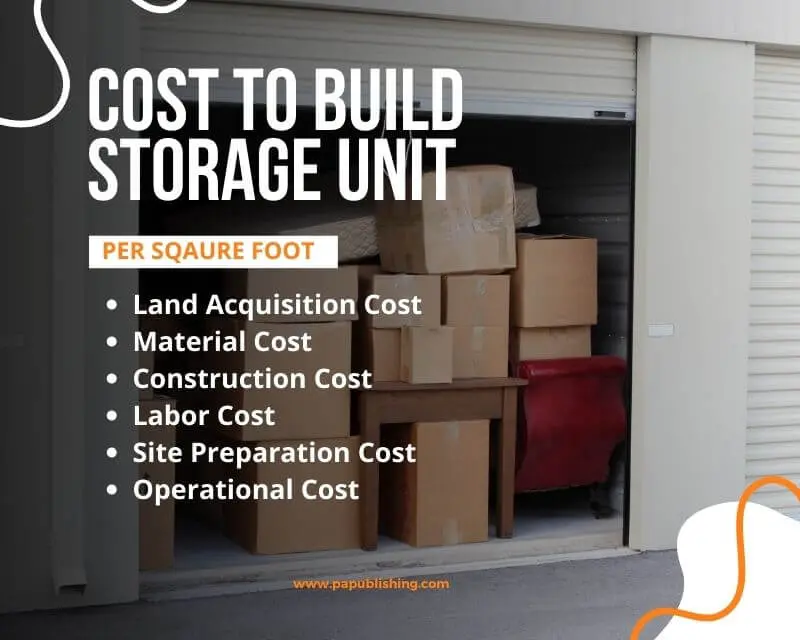How Much Does it Cost to Build Storage Units?
The storage unit sector is growing at an exceptional. According to Mordor Intelligence, the size of the self-storage unit market reached 58.26 billion dollars in 2023 and is expected to cross the 72 billion mark by the end of 2028. So, investing in the storage unit industry can be a lucrative opportunity for entrepreneurs. You must understand and estimate the costs involved when buying abandoned storage units, purchasing pre-existing units, or building newer ones.
As a part of this guide, we will explore the multiple factors that affect the cost to build storage units and provide valuable insights that will assist you in estimating how much does it cost to build storage units.
Land Costs: Securing the Foundation
Land acquisition is a significant cost when starting a storage business, which usually takes up 25 percent of the overall project cost. The size of the land depends on the scale of manufacturing. 40-45 percent of the total land is consumed by storage units, and the rest goes for drive aisles, parking, zoning requirements, landscaping, etc. Obviously, you can avoid the cost of land if you own a suitable place for a storage unit facility. But, still, you’ll need a certain amount for landscaping and zoning requirements depending upon the area and location.
Understanding Direct and Indirect Costs
For a realistic budget and sufficient capital, investors must estimate critical costs, such as land, construction, materials, labor, marketing, and operating expenses. Research and analyze specific variables for your self-storage construction cost per square foot.
Types of Storage Facilities: Choosing the Right Fit
There are four primary types of storage facilities:
- Warehouse storage (offered by big self-storage companies, climate-controlled, accessible 24/7),
- Container storage (metal shipping containers, cost-effective)
- Lock-up garages (purpose-built, found in residential areas)
- Removal depositories (for removal companies, controlled conditions, high security)
Breaking Down the Cost to Build Storage Units
Land Costs
In the United States, the storage unit industry is expanding, and land costs are a major portion of development expenses. Usually, land costs can vary from $1.25 to $3.25 per square foot. If you’re going with a rental place, then the net cost of a leasable square foot is $6.82. The Exact or Actual cost to build storage units depends on location and rental rates.
Construction Costs
Calculating approximate construction costs can be a tough task due to their variable nature. On average, the construction cost to build storage units ranges from $4.25 to $8 per square foot, depending on the landscape of the site. Single-story accommodations typically cost $25 to $45 per square foot, while multi-story accommodations may cost $42 to $70 per square foot.
Material Costs
The main material used in constructing storage units is steel and can range from $25 to $70 per square foot. Prices may vary according to the area’s location and other market factors.
Site Preparation Costs
The cost to build storage units also includes site preparation costs, which depend on the terrain and vegetation. Sloped and heavily vegetated sites may incur costs of up to $15 per square foot, whereas flatter areas with lighter vegetation may have costs of $3 to $6 per square foot.
Labor Costs
Labor costs average around $26 per square foot but can be influenced by factors such as labor shortages.
Additional and Operating Costs
Additionally, advertising and operating costs must be measured. A business should not spend more than 8% of its gross revenue on marketing, and operating costs should not exceed $2.75 per square foot.
Conclusion
Building a storage unit facility offers an excellent investment opportunity. However, it’s crucial to carefully evaluate the cost to build storage units which includes a number of factors such as facility, location, and site preparation. By understanding these key factors and accurately estimating expenses, investors can make well-informed decisions that lead to a successful and profitable venture in the storage unit industry.



